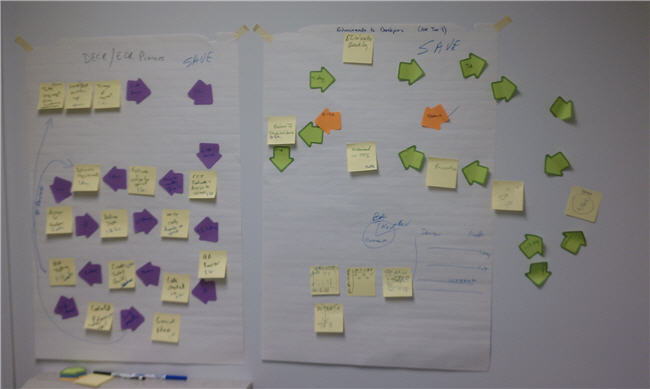Lean Services
Applying Lean Thinking to Service Industries
At it's heart, lean is about speed and the relationship between steps in a process. It's about eliminating non-value added elements from the process. It's about shrinking batch sizes down to create a "one-piece flow."
The Problem: Ad Hoc Processes
Most lean processes, whether it’s ordering, billing, manufacturing, or fulfilling an order, evolve from ad-hoc processes cobbled together over time. To "reduce costs," work is handled in increasingly large batches by specialized individuals. Each employee is busy working hard, but their inbox stays full and their outbox becomes someone else’s inbox.
The Customer’s "Lazy" Order
Most people don’t see how they can possibly work any faster…and they’re right. Speed is not about the people working harder or faster; it’s about focusing on the customer’s "lazy" order.
Here’s what I’ve learned: your people are always busy, but the customer’s order is IDLE 90% of the time. The order doesn’t mean to be a bum, but the process forces it to behave this way. Sure, you can always squeeze a little more speed out of the workers on the "factory" line, but the big gains always come from putting the squeeze on the order, not the people.

A lean thinking model and tools can be used to analyze a process flow and find non-valued added work. These include: flowcharts, value stream maps and spaghetti diagrams.
Value Stream Map Example

Medical Claims Example
A medical claims group was taking, on average, 140 days or more to process each claim. Upon examination, we found that processing the claim only consumed 7 hours (one day) of this time; the rest of the time the claim sat around waiting for something to happen. In just a two day session we found ways to shave almost 100 days off their cycle time. That’s a 70% reduction in cycle time or a 3-fold increase in speed.
Computer Operations Example
One computer operations group was having trouble finishing their nightly "batch" processing so that they could bring up the customer service online systems in the morning. It was taking, on average, 8-10 hours a night. When we examined the process, we found that the actual time required to run the batch programs was an hour, but there were 32 points in the process where they waited for technician validation before they could move forward. Turns out the computer’s job scheduler could do most of what the techs did, so they automated 30 checkpoints, and the jobs now finish in 1-2 hours…an 80% reduction in cycle time, or a five-fold increase in
The Power of Reducing Cycle Time
In the book, Competing Against Time (Free Press 1990), the authors present compelling evidence for the power of reducing cycle time.
The 5% Rule: The actual time required to produce or deliver a service is only 5% of the total elapsed time.
The 25-20 Rule: Every 25% reduction in elapsed time will double productivity and reduce costs 20%.
The 3X2 Rule: Companies that routinely reduce cycle time enjoy growth rates three times the industry average with twice the profit margins.
Learn More...
- Lean Services - Do More with What You've Got
- Seven Speed Bumps of Lean Video
- Value Stream Mapping Tool in Excel
- Spaghetti Diagramming Tool in Excel

 Take our FREE Lean Six Sigma Yellow Belt training online.
Take our FREE Lean Six Sigma Yellow Belt training online.
